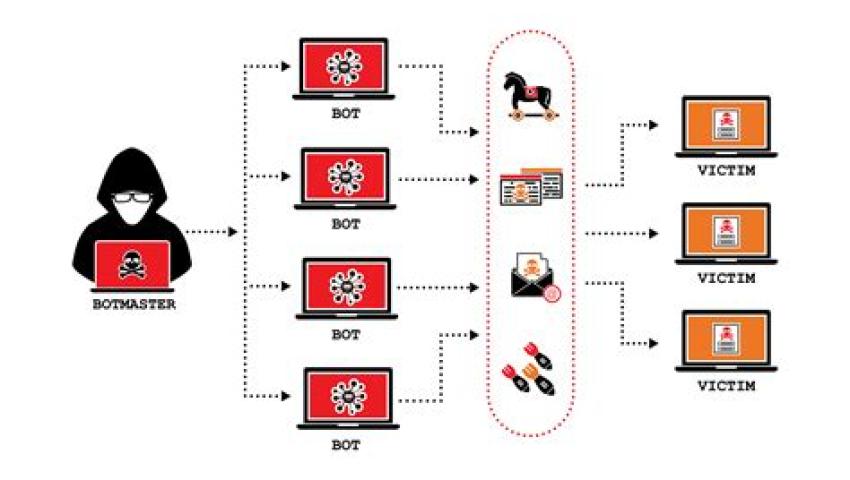
Analyzing Malicious Traffic with the Suricata IDS Tool
Suricata is a high-performance Network IDS/IPS and Network Security Monitoring (NSM) engine. It is capable of analyzing network traffic in real time and can detect a wide variety of threats including but not limited to malware infections, denial-of-service attacks, port scans, and exploits.
In today’s digital age, network security has become more critical than ever before. Cyberattacks are becoming more sophisticated, and defending against them requires tools that can accurately detect and analyze suspicious network traffic. One such tool is Suricata, an open-source Intrusion Detection System (IDS) and Intrusion Prevention System (IPS) that provides real-time network traffic analysis and detection of various types of attacks.
Suricata is known for its high performance, versatility, and support for a wide range of network protocols. It can capture network traffic, analyze it for potential threats, and log relevant details for further investigation. In this article, we will walk through how to analyze malicious traffic using the Suricata IDS tool, from installation to interpretation of results, with step-by-step examples.
What is Suricata?
Suricata is a high-performance Network IDS/IPS and Network Security Monitoring (NSM) engine. It is capable of analyzing network traffic in real time and can detect a wide variety of threats including but not limited to malware infections, denial-of-service attacks, port scans, and exploits. Suricata provides a robust set of features:
Multi-threaded capabilities: Suricata can use multiple threads to process traffic, making it highly efficient for handling high-speed network environments.
Deep packet inspection: It inspects network packets at multiple layers, including application-level protocols like HTTP, FTP, and DNS.
File extraction: Suricata can extract files from network traffic for further analysis (e.g., malware analysis).
- Rich rule set: It uses rule sets to detect network-based attacks. Suricata is compatible with Snort and Suricata rules, allowing it to detect known attack signatures.
Prerequisites for Using Suricata
Before diving into the process of analyzing malicious traffic with Suricata, ensure the following prerequisites:
- A Linux System: Suricata is primarily designed for Unix-like operating systems such as Linux. It can also run on macOS and Windows, though it’s most commonly used on Linux distributions like Ubuntu, CentOS, or Kali Linux.
- Root or Sudo Privileges: Suricata needs access to network interfaces to capture traffic, so you’ll need administrative privileges to run it.
- A Network Interface for Traffic Capture: You should have a network interface with traffic that can be analyzed. Suricata can listen to network traffic from an interface in real-time.
- Suricata Rules: Suricata uses signature-based detection to identify malicious activity. You can use default rule sets (e.g., from Emerging Threats) or create your own custom rules.
- A Sample Traffic or Attack: To analyze malicious traffic, it helps to either have a known traffic sample or simulate an attack to understand how Suricata detects it.
Step 1: Installing Suricata
Suricata is available for most Linux distributions and can be installed from the package manager or compiled from source.
Installation on Ubuntu (Debian-based systems):
Update your package list:
sudo apt updateInstall Suricata:
sudo apt install suricataVerify Installation: After installation, you can verify that Suricata is working by checking the version:
suricata --version
Installation on CentOS (RHEL-based systems):
Enable the EPEL repository:
sudo yum install epel-releaseInstall Suricata:
sudo yum install suricataVerify Installation:
suricata --version
Step 2: Configure Suricata for Traffic Capture
Once Suricata is installed, you need to configure it to capture network traffic. By default, Suricata uses the eth0 interface, but you can specify any network interface on your system.
- Identify the network interface: Use the
ifconfigorip acommand to list all network interfaces. Identify the interface you want Suricata to monitor (e.g.,eth0,wlan0, etc.). Modify Suricata’s configuration file: Suricata’s configuration file is located at
/etc/suricata/suricata.yaml. Open it for editing:sudo nano /etc/suricata/suricata.yamlSet the network interface: In the configuration file, find the section
af-packetand set the interface Suricata should capture traffic on. For example:af-packet:- interface: eth0Restart Suricata: After making changes to the configuration, restart Suricata to apply the settings:
sudo systemctl restart suricata
Step 3: Run Suricata for Traffic Analysis
Now that Suricata is configured to capture traffic, you can begin analyzing network traffic.
Start Suricata in IDS mode: You can run Suricata in the background to capture and analyze network traffic. Use the following command to start Suricata:
sudo suricata -c /etc/suricata/suricata.yaml -i eth0This tells Suricata to use the configuration file
/etc/suricata/suricata.yamland listen on the interfaceeth0.- Capture and analyze traffic: Suricata will start analyzing packets in real-time. It will generate alerts for suspicious activities such as port scans, SQL injection attempts, or other known attacks.
Step 4: Interpret Suricata Alerts
Suricata logs alerts in the eve.json file, typically located in /var/log/suricata/eve.json. You can use this log to investigate any malicious activity detected by Suricata.
Open the eve.json file: The
eve.jsonfile contains JSON-formatted logs of Suricata’s analysis. You can use any text editor or command-line tools likecatorlessto view it:cat /var/log/suricata/eve.jsonExample alert: Here’s an example of a log entry from the
eve.jsonfile for a potential SQL injection attack:{"timestamp": "2024-11-01T12:34:56.789012+0000","flow_id": 123456789,"event_type": "alert","src_ip": "192.168.1.100","src_port": 443,"dest_ip": "192.168.1.200","dest_port": 80,"proto": "TCP","alert": {"signature_id": 12345,"rev": 1,"signature": "SQL Injection attempt","category": "Attempted User Privilege Gain","severity": 3},"message": "SQL Injection attempt detected in HTTP request"}- Undersand the alert:
timestamp: The time the event was detected.
src_ip: The source IP address (attacker's address).
dest_ip: The destination IP address (target server).
signature: Describes the type of attack (e.g., SQL Injection).
- severity: The severity of the alert (e.g., low, medium, high).
Step 5: Investigate Malicious Traffic
Once Suricata has detected malicious traffic, the next step is to investigate it. You can use various tools to analyze the network traffic further:
- Wireshark: Use Wireshark to capture and inspect network packets in more detail. If Suricata detected an attack, you can use Wireshark to see the exact data exchanged between the source and destination.
- Suricata’s PCAP output: Suricata can also save captured packets to a
.pcapfile, which can be analyzed later. To enable this, configure theoutputssection in thesuricata.yamlfile to store PCAP files. - Correlate with Threat Intelligence: You can cross-reference the malicious traffic with known threat intelligence databases to get more information about the attack and the attacker.
Step 6: Mitigate the Threat
Once you've identified the malicious traffic, the next step is to mitigate the threat. Depending on the severity, this might involve blocking the attacker's IP, patching vulnerabilities, or tuning Suricata to block the attack in real-time using IPS mode.
Conclusion
Suricata is an invaluable tool for network traffic analysis and detection of malicious activity. By configuring Suricata to monitor network interfaces, analyzing alerts, and investigating traffic patterns, security professionals can identify and respond to threats in real-time. Whether you are dealing with malware, DDoS attacks, or unauthorized access attempts, Suricata offers the insights necessary to defend your network against evolving threats.
Alex Ananenko
Leave a comment
Your email address will not be published. Required fields are marked *


